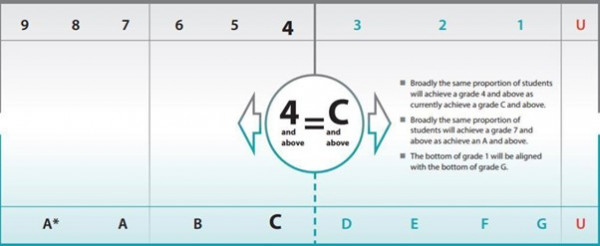





September 07, 2022
This is a guide for parents of GCSE students.
The guide explains all you need to know about the new ‘9-1’ Science GCSEs. It summarises the changes that have occurred in recent years, discusses the content of the new exams and explains what you can do to help your child.
(Please note the guide deals solely with the system in England).
Changes to the science GCSEs
There are three GCSE exam boards in England: AQA, Edexcel and OCR. The entire GCSE system has gone through a complete overhaul over the last few years. The changes were first introduced for Maths and English, with GCSEs under the new 9-1 system taking place in 2017. For the GCSE Science subjects, the first 9-1 exams took place in the summer of 2018.
Change to the grade system
The most obvious change is to the grade system. The old A*-G scale has been replaced by a new ‘9-1’ scale. A grade 9 is the highest available (and is equivalent to a high A*). The new “good pass” is considered now to be a grade 5.
The graphic below, published by exam regulator Ofqual, compares the old and the new grade scales.
Changes to the exam specification
The specification (what many parents would call the ‘syllabus’) lists all the topics and learning objectives that a student must cover during their entire GCSE course. The new 9-1 specification has been updated substantially and includes more content and more challenging subject content than the old specification. Simply put, the GCSEs are more demanding than before. As a result, however, the grade boundaries are lower than previously, which means that students can get a high grade with a relatively modest percentage mark.
Change from modular to linear
Previously, GCSEs were modular. Students could take some of their GCSE exams and/or ‘coursework units’ well before the end of the course. Under the new system, the GCSEs are completely linear. All the exams are taken at the end of Year 11.
The merits of linear system vs a modular system are debatable and there are pros and cons to each approach. But the fact is that a linear system has now been adopted and that means that a student’s performance during the final GCSE exams this summer is critical to the grade they achieve.
Change from coursework to required practical
There is no coursework in the new linear system, but practical work (scientific experiments) remains an integral part of the GCSEs. Each exam board has specified certain practicals that are mandatory for all students. The theory behind these practicals, as well as the practical skills themselves – planning, analysis and evaluation – will be tested in the GCSE exams. There will be no separate grade for practicals, but questions related to practicals will account for 15% of the total marks in the final exams.
Questions relating to maths skills in science will account for at least 20% of the marks in the new exams, divided between Biology, Chemistry and Physics in the
Triple Science vs Double Science
Triple Award Science (sometimes known as ‘Separate Sciences’ or ‘Single Sciences’) is where students study all three sciences and end up with three GCSEs. Double Award Science (also known as ‘Combined Science’ or ‘Trilogy’) is where students study all three sciences (Biology, Chemistry and Physics) but end up with two GCSEs. The majority of GCSE students in England follow the Double Award course, which covers approximately two thirds of the content covered by Triple Award Science students. They are awarded two GCSE grades based on their overall performance across all three science subjects. This system was introduced in 2006. It can cause confusion because, when parents were at school, “Double Science” meant two of the three science subjects.
Exam dates and papers
All GCSE Science students (both Double and Triple students on all three exam boards) will take a total of six papers, two for each subject as follows:
Biology - Paper 1
Biology - Paper 2
Chemistry - Paper 1
Chemistry - Paper 2
Physics - Paper 1
Physics - Paper 2
Each Double Science paper will have a duration of 1h 15m (AQA) or 1h 10m (Edexcel and OCR), while each Triple Science paper will have a duration of 1h 45m. Paper 1 and Paper 2 each cover half the content for the subject, with certain topics assigned to each paper.
Foundation tier vs Higher tier
Each exam features Foundation tier and Higher tier papers. Foundation tier is designed for students who are aiming for grades 1-5, and Higher tier is designed for students who are looking for grades 4-9. Based on guidance from school, students must choose whether to sit Foundation tier or Higher tier (and they must then take all six papers at the same tier).
What are the new 9-1 exams like?
The exams will consist of a mix of question types including multiple choice questions requiring short answers and questions requiring longer, more complex answers. The questions get progressively more difficult as the student works through the exam. One inevitable consequence of the introduction of a new system is that students do not have a bank of past exam papers to be used for exam practice. Each exam board has produced a small number of new 9-1 specimen papers. These are useful, but there aren’t enough of them to allow students to fully develop their exam technique.




































































































































































































































Science Clinic Private Tutors





5.0 rating of Parents reviews